The wind and rain of autumn reduces deciduous trees to shadows of their former selves, their naked skeletons have a beauty all of their own. Free of leaves, their characteristic silhouettes are revealed once more, making winter the perfect time to get to know our native species.
One of the best places to tree-watch is your local park. Packed tightly in a woodland or plantation, trees can be hard to tell apart and they have to fight for space so vary a great deal in shape, whereas in a parkland setting they flourish and acquire their ‘textbook’ appearance.
Those that have been pollarded or coppiced may be tricky to identify, but in their prime, well-grown specimens soon become familiar.
As with birds, every species of tree has its own distinctive ‘jizz’ – a set of unique characters that you might not find easy to describe, but that with experience become second nature.
Key features to look for are the height of the tree, the pattern of its branches and the habitat in which it’s growing. The angle that the branches make with the main trunk is often helpful, and so is the thickness and form of the terminal twigs. Small-leaved limes, for example, have a filigree of fine twigs, while horse chestnuts are thick and knobbly, ending in treacly buds.
Learn how to identify British tree species in the winter with our expert guide. It is also possible to identify many common species of tree by their bark.
Best British tree species to see in the winter months
All illustrations by Felicity Rose Cole.
1
Sycamore Acer pseudoplatanus
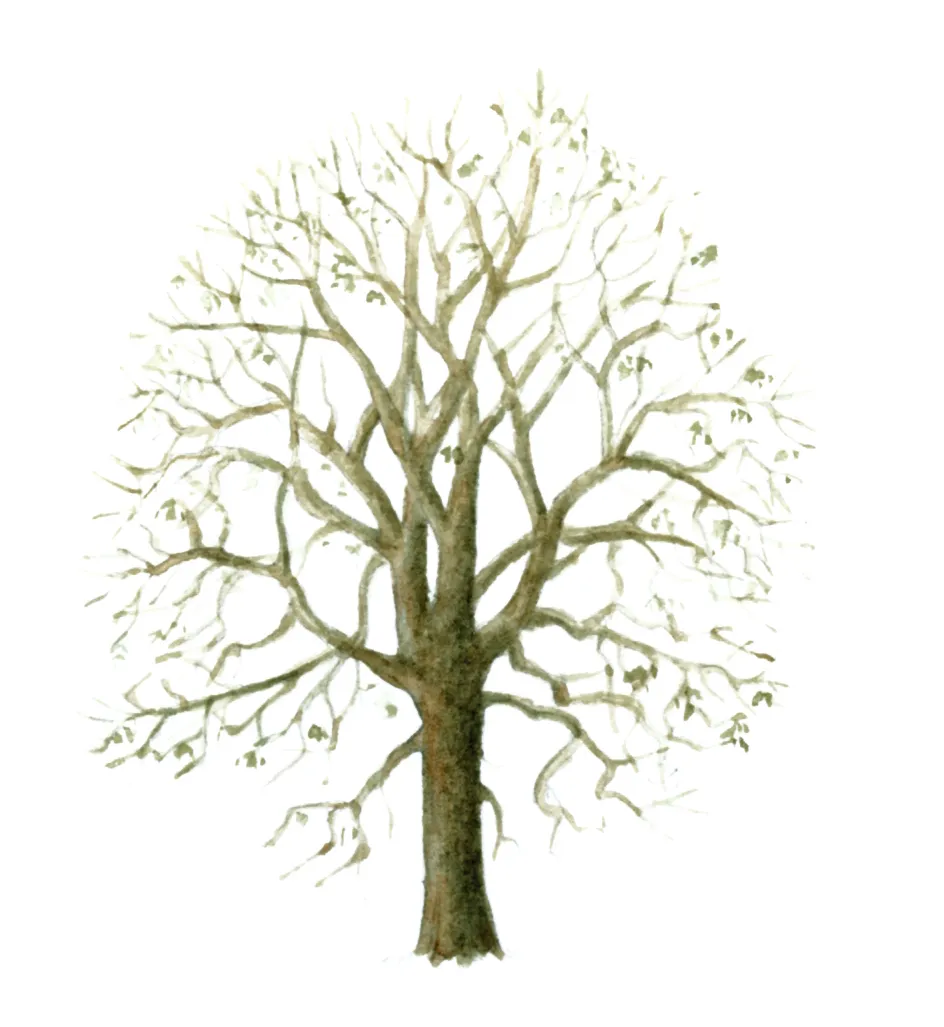
The sycamore has a large dome-like profile with a high crown and rough, flaking bark.
2
Horse chestnut Aesculus hippocastanum
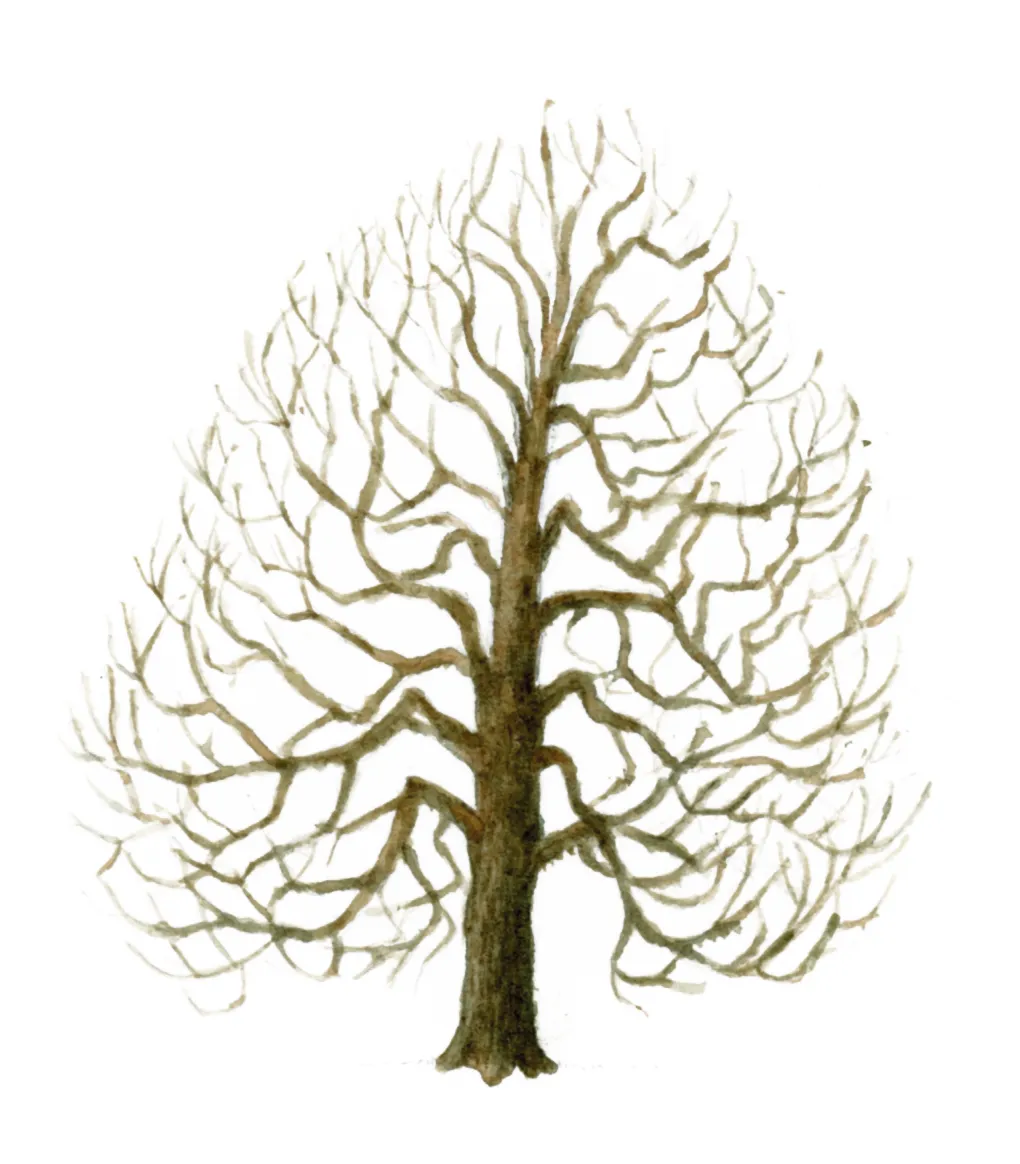
A robust tree, the lower branches of the horse chestnut hang down and turn up at the ends. Also look out for its sticky buds.
3
Beech Fagus sylvatica

A beech has a straight trunk with grey-coloured bark, few low branches and a fine-twigged crown.
4
Rowan (aka mountain ash) Sorbus aucuparia
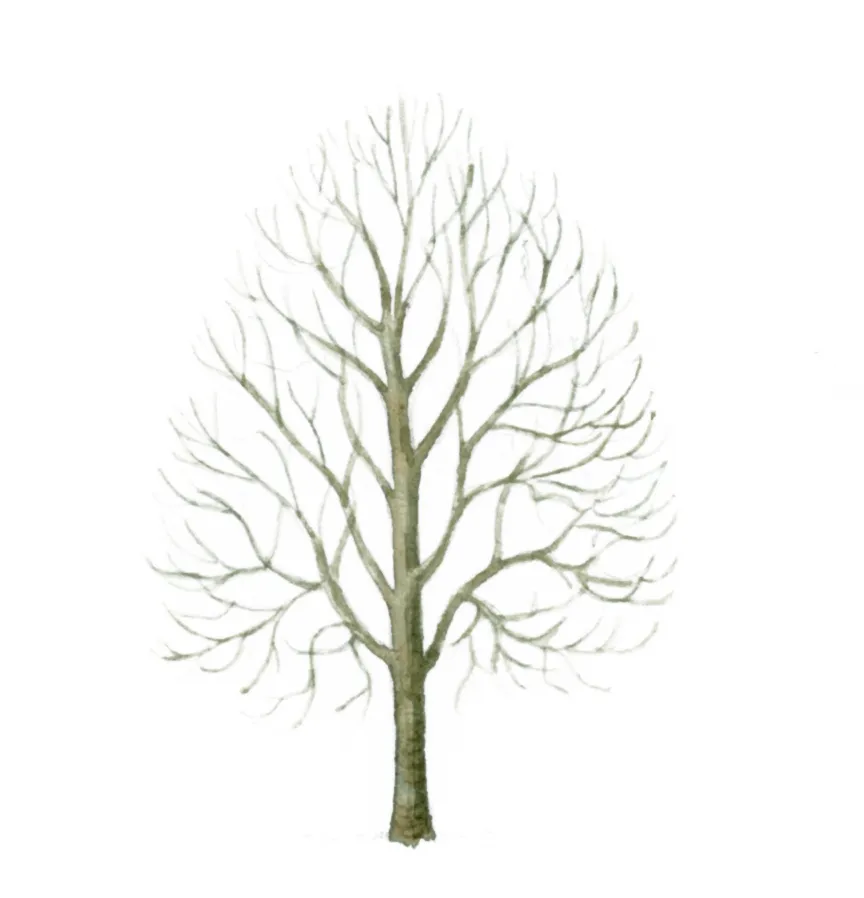
The rowan has a shapely profile with a smooth bark and felty buds. Look out for it on moors and crags on acid soil.
5
Small-leaved lime Tilia cordata
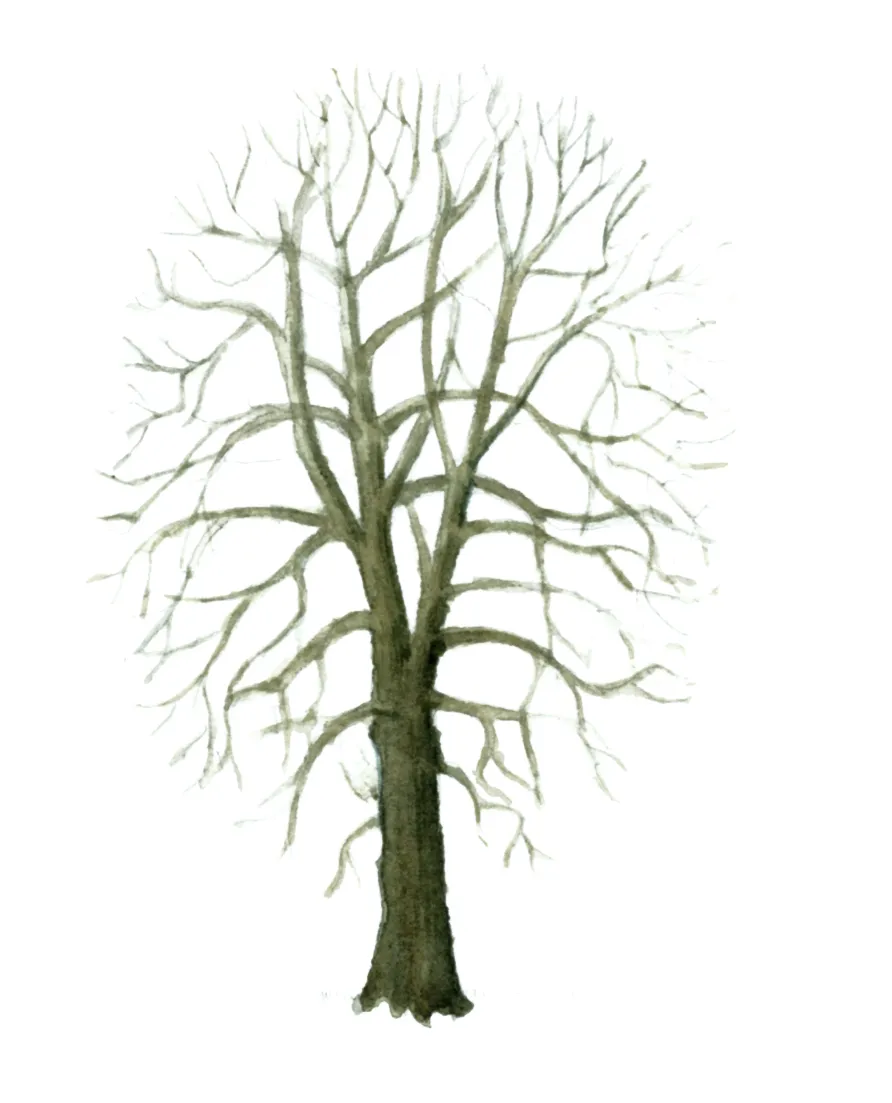
Small-leaved limes are tall with fine tracery of upper twigs. Mainly found in the south and Midlands.
6
Common (English) oak Quercus robur
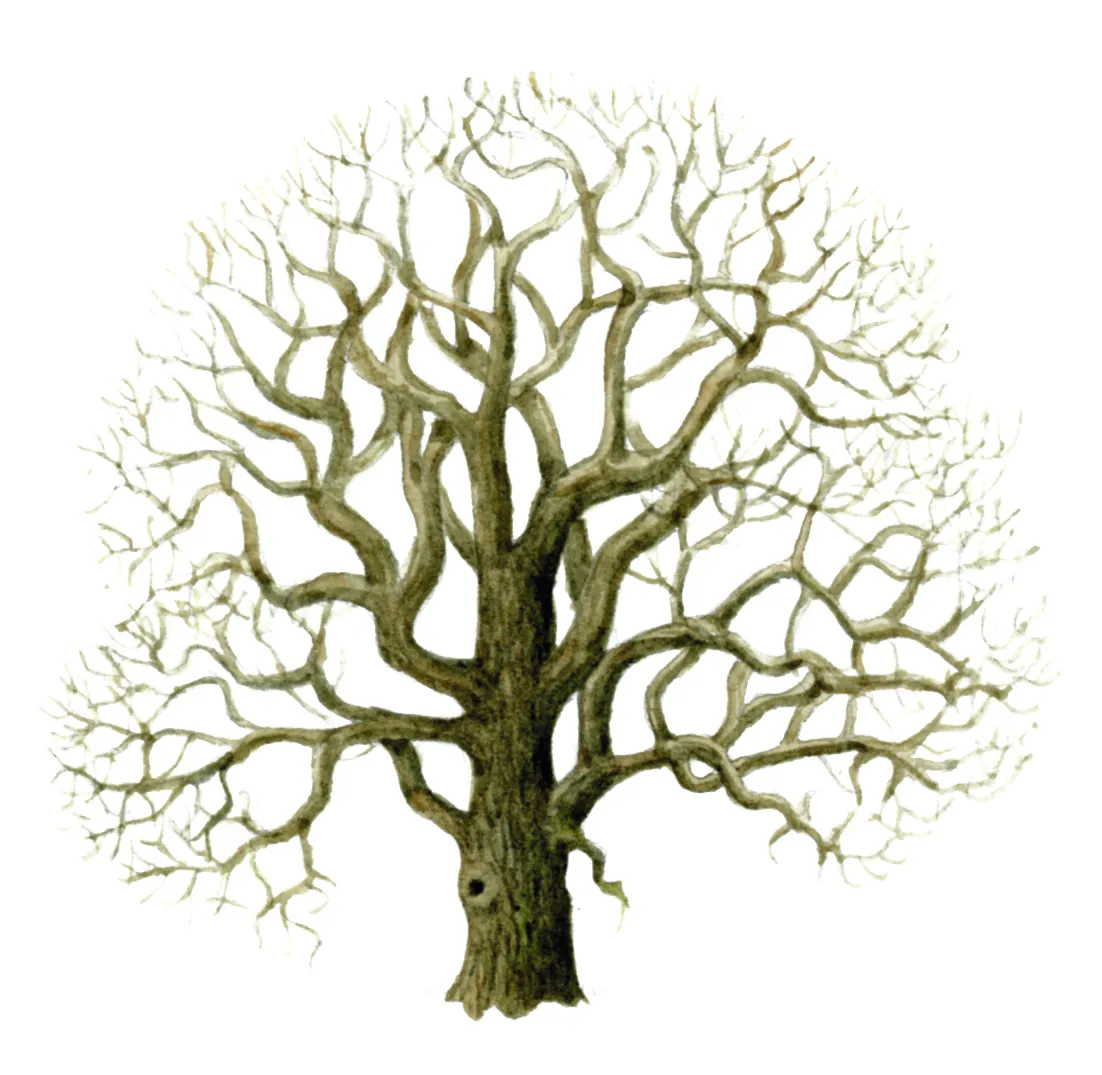
The common (English) oak is quite a stocky tree and its first branches often quite low. It has a wide, spreading canopy.
7
Alder Alnus glutinosa
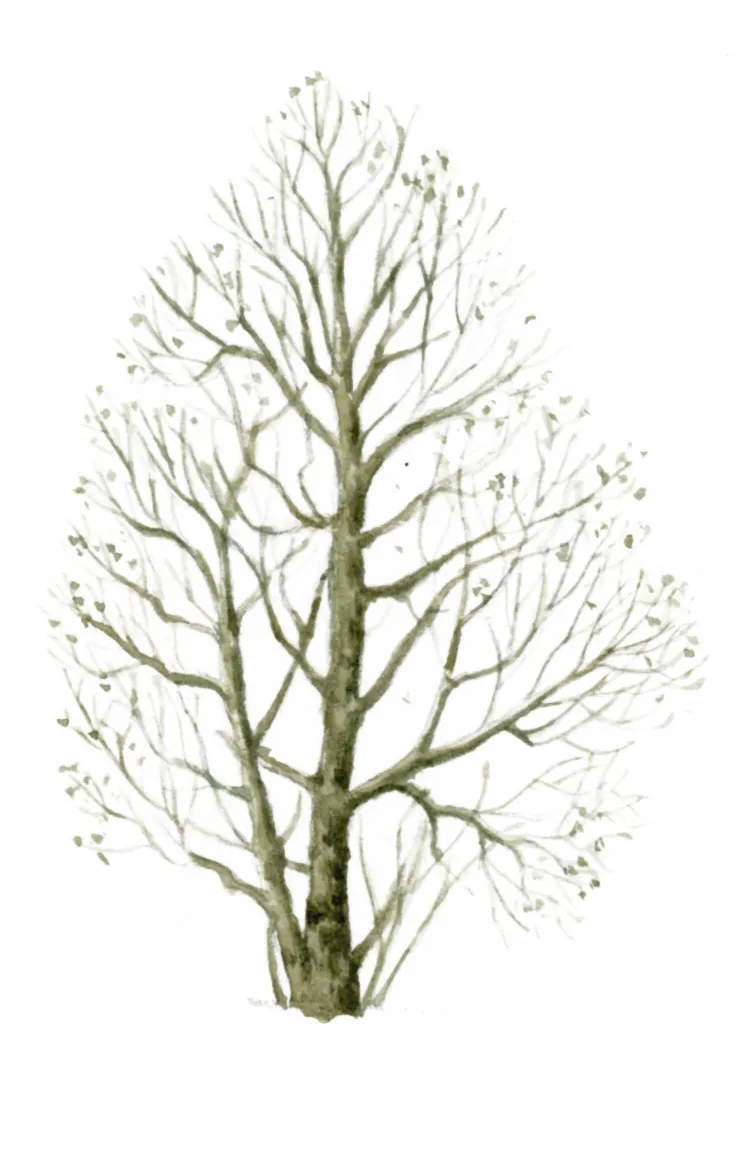
Alder is slim and its branches are often asymmetrical. Look out for it on riverbanks and other damp areas.
8
Ash Fraxinus excelsior
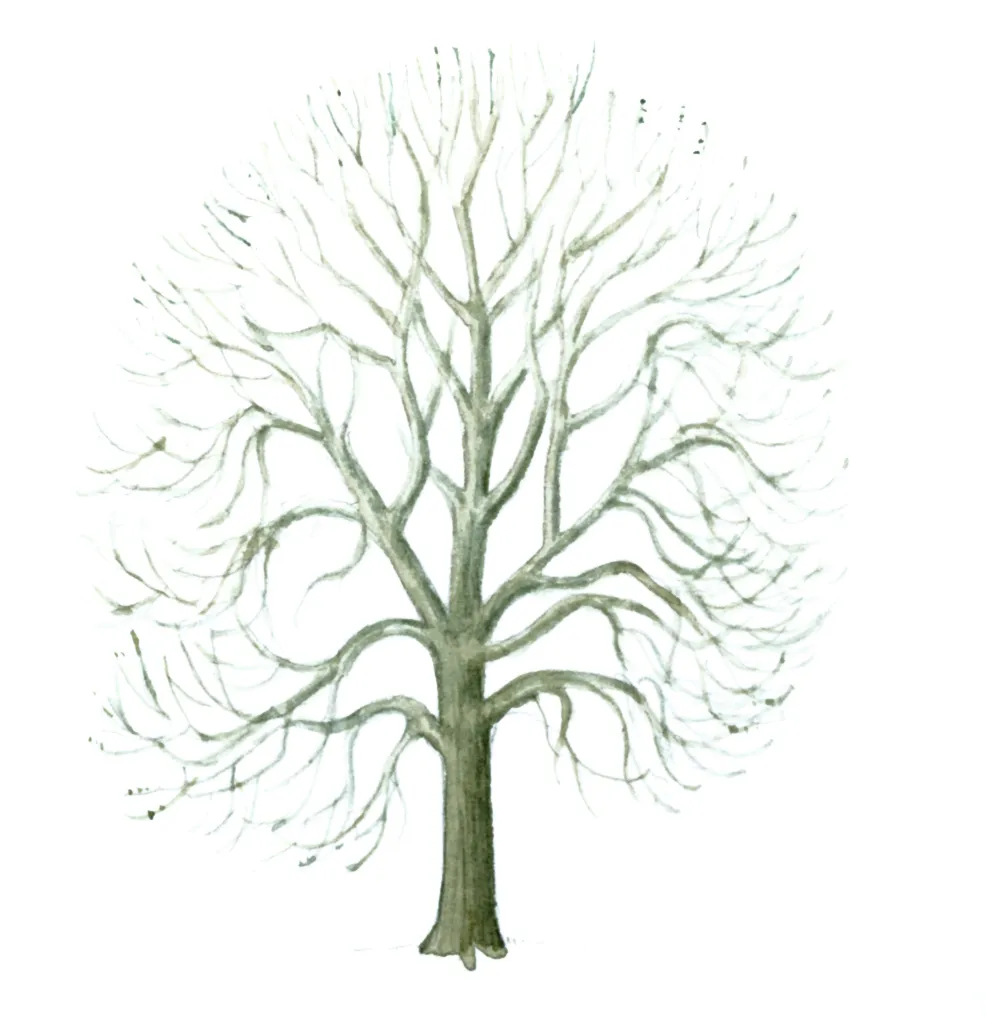
Ash is quite a slender tree with upturned, trailing branches and black buds.
9
Silver birch Betula pendula
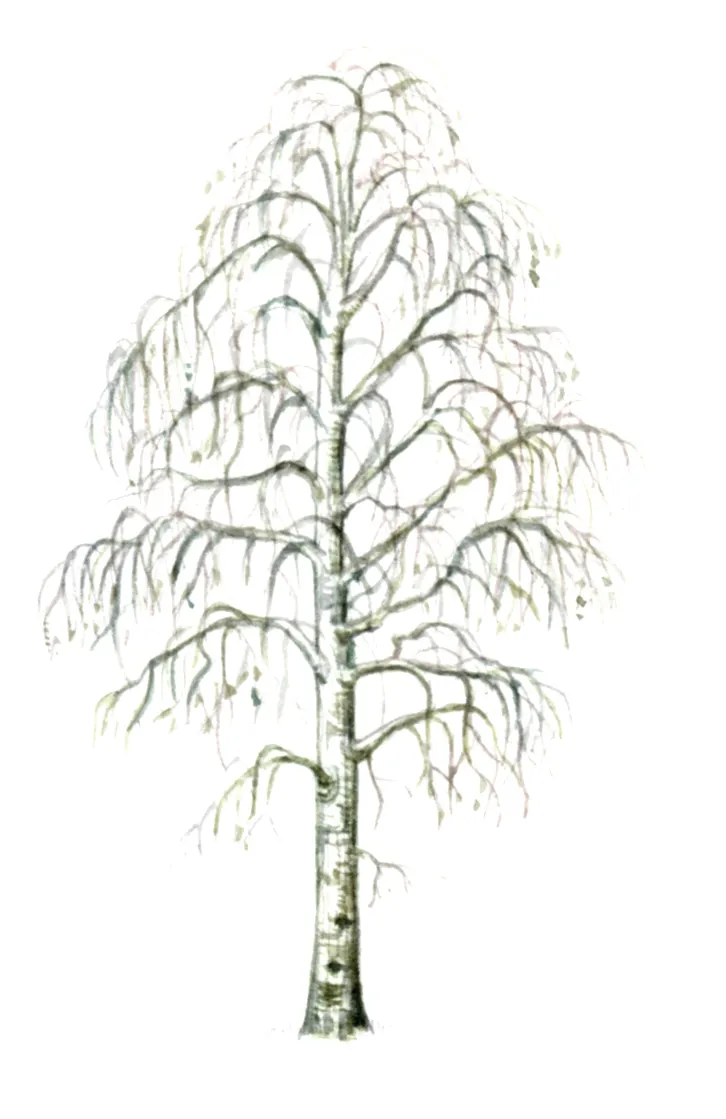
Silver birch is a very slim tree. It has pale bark with dark cracks and slender, trailing branches.
10
Hawthorn Crataegus monogyna
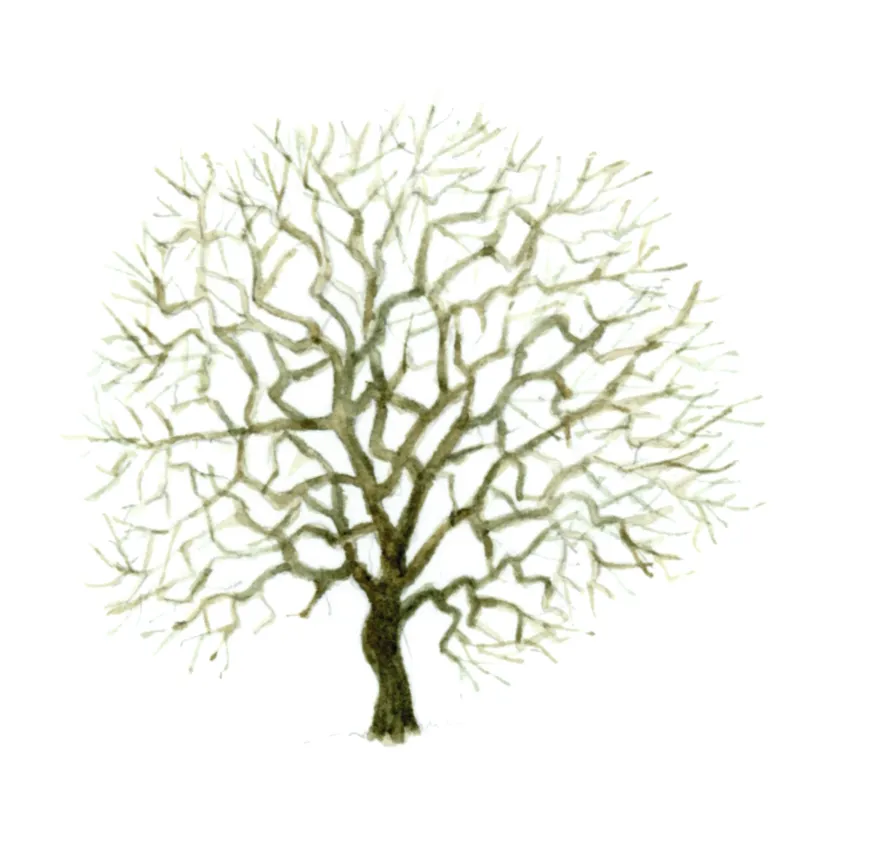
Hawthorn develops a thorny mass of twigs. Look out for it in hedgerows, moors and commons.
11
Common hazel Corylus avellana
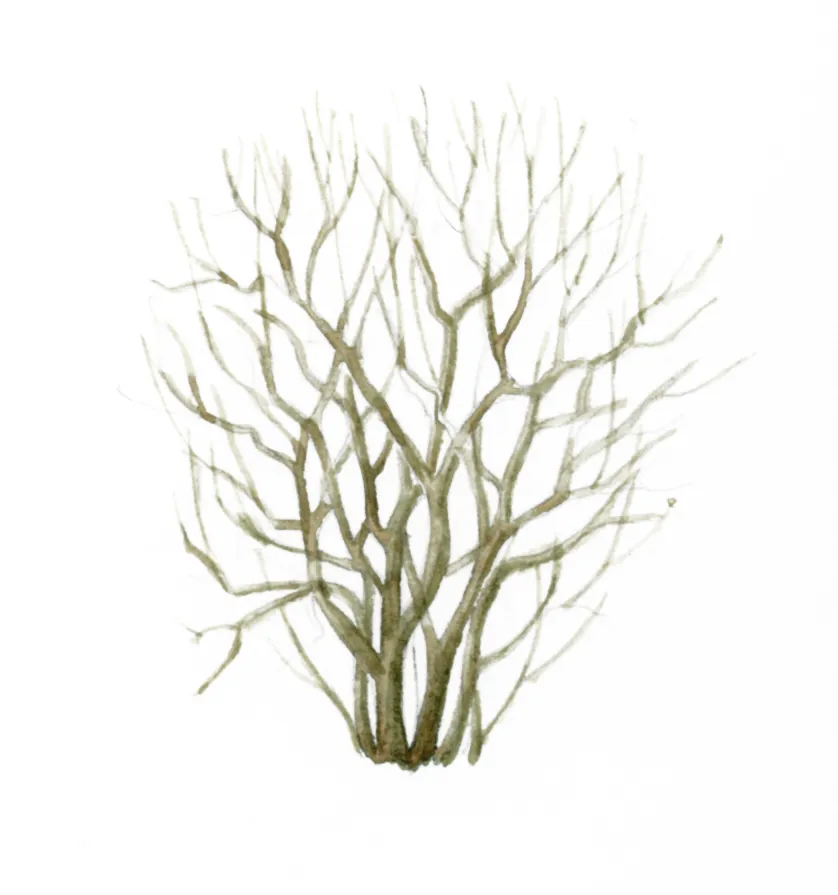
Hazel is usually multi-stemmed and has a smooth, shiny bark. Look out for its catkins in winter.
12
White willow Salix alba
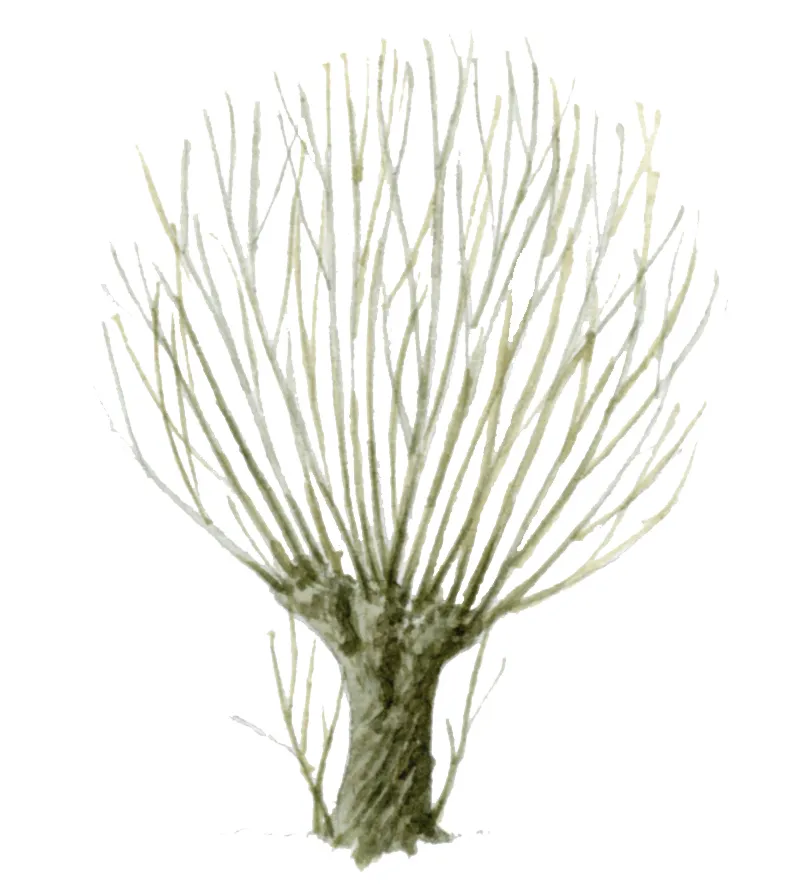
White willow has a straight trunk and whippy crown. It is often pollarded (as above), and can be found in damp areas.
